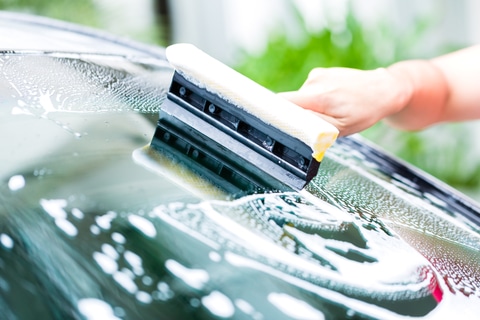 Taking care of all parts of your vehicle is important if you want it to remain in good roadworthy condition. While many pay a great deal of attention, time and money on the bodywork, often the windscreen is overlooked. The clarity and overall condition of the screen is as important as other aspects and a thorough cleansing routine is vital. Finding streaks across the screen when the sun gets low, or it’s a misty day are not just annoying – they can prove to be a dangerous driving hazard. By following the below advice and tips you can help keep your windscreen clean, sparkling and in top condition.
Taking care of all parts of your vehicle is important if you want it to remain in good roadworthy condition. While many pay a great deal of attention, time and money on the bodywork, often the windscreen is overlooked. The clarity and overall condition of the screen is as important as other aspects and a thorough cleansing routine is vital. Finding streaks across the screen when the sun gets low, or it’s a misty day are not just annoying – they can prove to be a dangerous driving hazard. By following the below advice and tips you can help keep your windscreen clean, sparkling and in top condition.
First, start with the outside. Cleaning this first makes it easier to clean the inner afterwards and see where the interior marks are.There are many products you can use, from traditional chamois leathers, extending tools to help you get to the hard-to-reach areas, glass cleaning liquids and polishers.
Whichever you choose, remember that windscreens are glass: although they are toughened and laminated for increased strength, they can still scratch and are susceptible to rapid heat changes, so the two basic rules: no sharp edges and no hot/boiling water (especially in cold temperatures).
Routines can be complex and involve many steps, but by following the basic steps you can add to them as you want.
Begin by using your chosen glass cleaner on the window, using a clean microfibre cloth to clean the glass – a dirty cloth will just spread streaks. Clean every part of the screen, using tools for any areas you may find hard to reach. Once cleansed, use a completely dry cloth to take as much liquid as possible off the windscreen – residue will dry leaving marks.
Now the inside surface. Once the outside is sparkling, it will be easier to see exactly where the marks are on the inside: streaks from clearing moisture, sucker marks from sat navs etc. Again, the same cleanser-clean microfibre-dry steps are the basic routine. For the interior though, rather than spraying cleanser directly onto the glass, spray it onto your cloth: you won’t waste liquid by losing it into the air and you won’t risk spoiling your interiors by having cleansing fluid on them. Clean and dry thoroughly.
Your choice of cleaning products is a personal one, and you should use the ones you find work best for you or which you prefer: there is a wide range of cleansers to choose from, all promising great results and some with additional properties such as water resistance – pick the one that works best for you. And – whilst cloths can be easiest to use they need laundering; paper towels are also highly absorbent but can break apart and leave residue (as well as being single-use); cloth rags can be a practical alternative for some.



